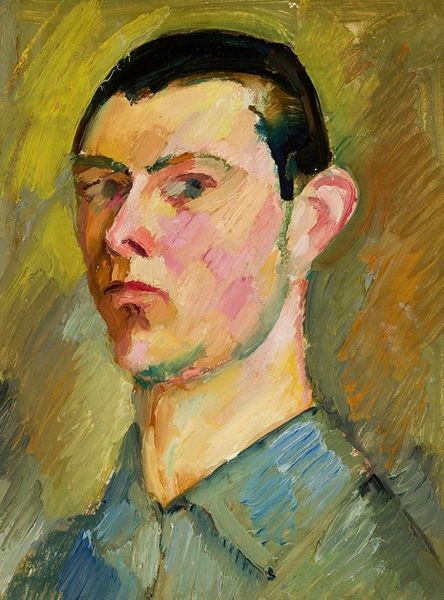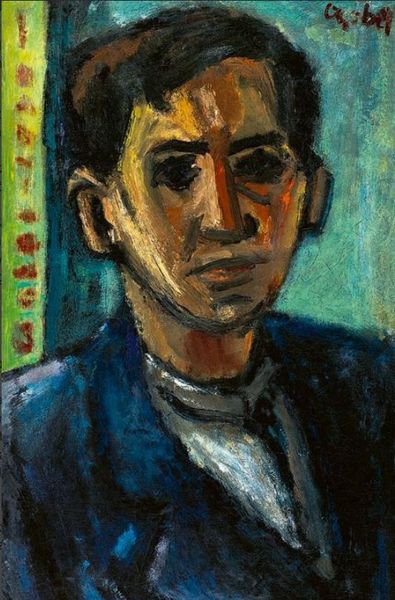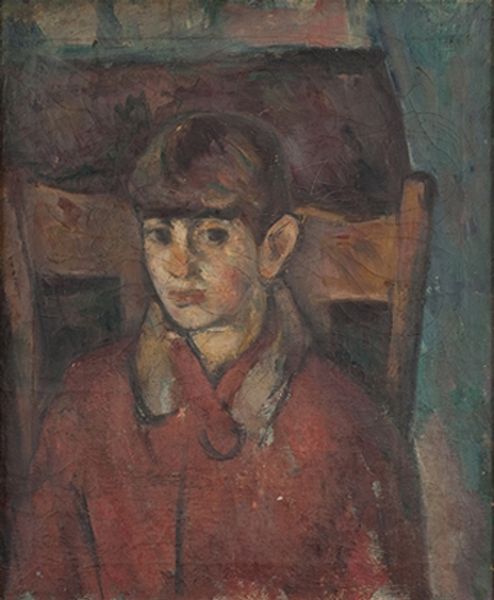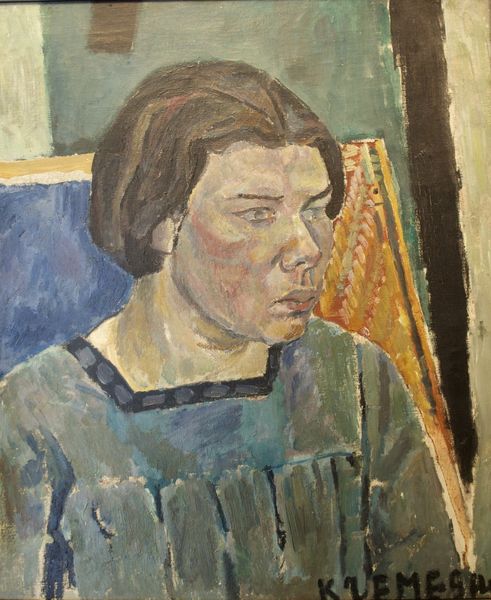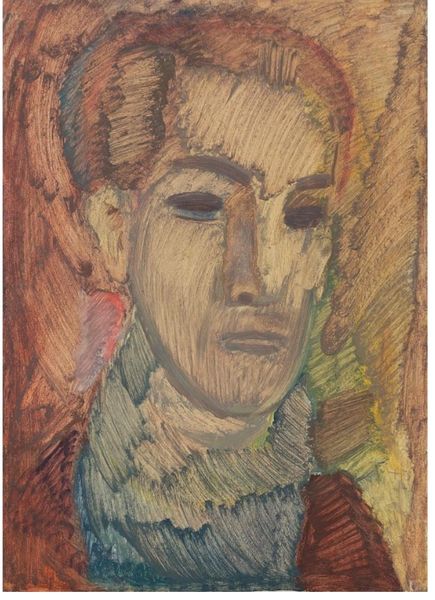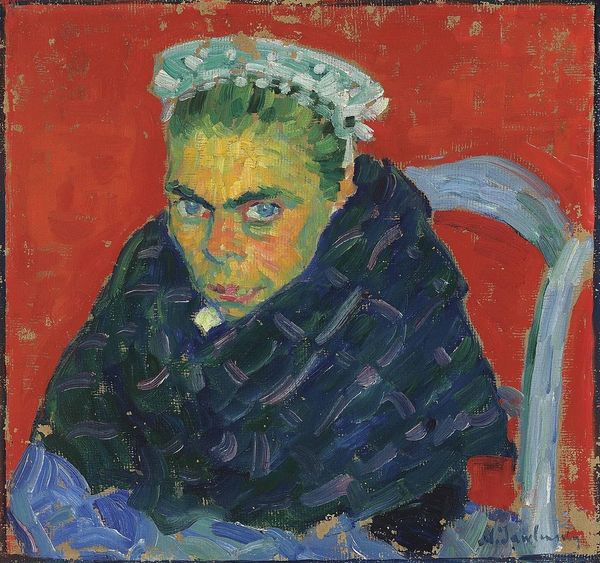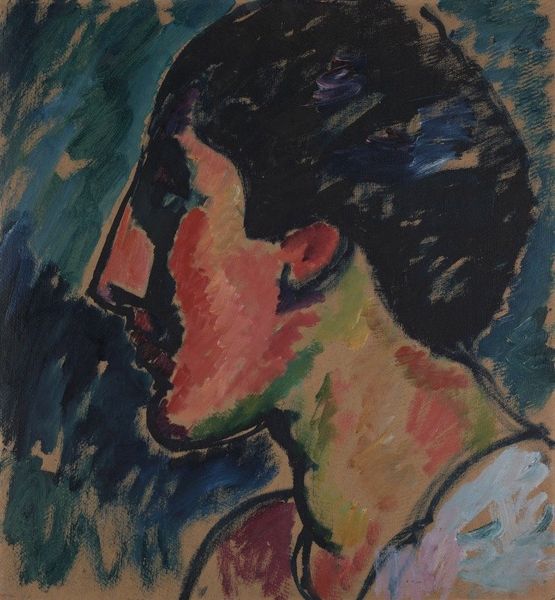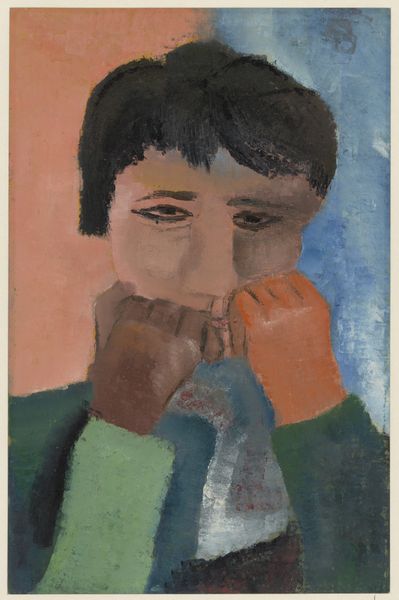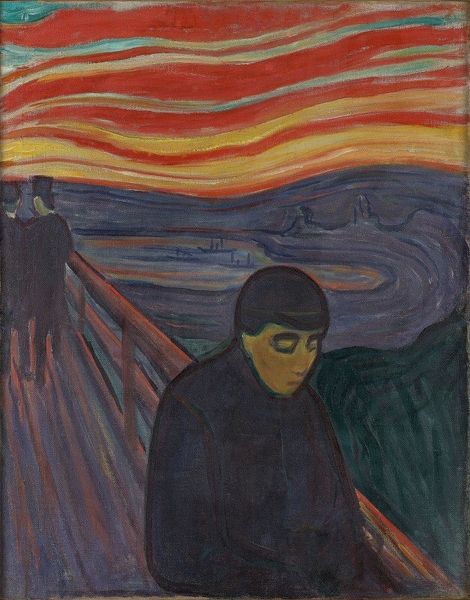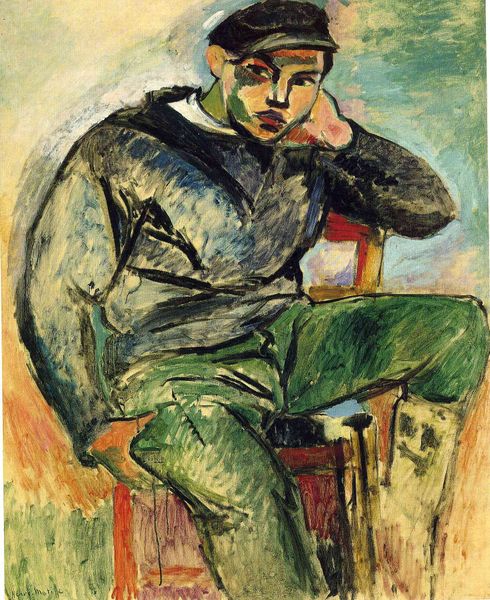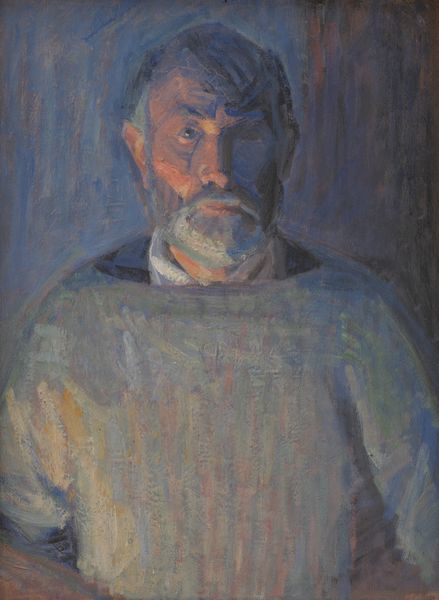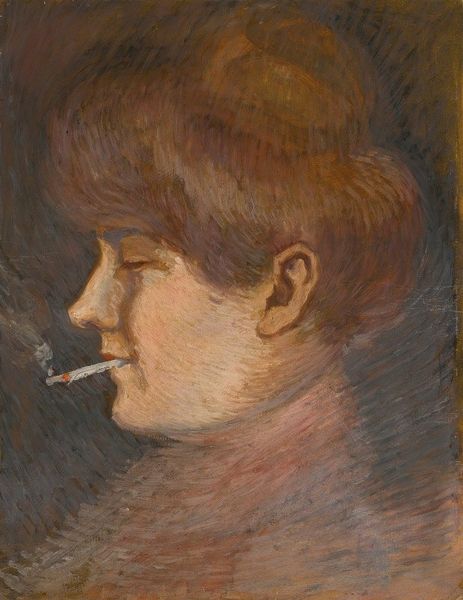
painting, oil-paint
portrait
painting
oil-paint
german-expressionism
acrylic on canvas
expressionism
Editor: So this is Alexej von Jawlensky's "The Hunchback," painted in 1905. It’s an oil painting and what immediately grabs me is the colour; his face is all yellows and oranges against that cool blue background. What's your interpretation? Curator: Observe the application of the paint itself. See how the brushstrokes are quite visible, almost crude? This impasto technique isn’t merely representational; it's performative. Jawlensky uses it to build form but also to express feeling. Note especially how these textures are heightened around the contours of the face and shoulder, and how they almost vibrate in contrast to the relative smoothness of the figure's blue shirt. Editor: That’s a very close reading, yes, I see how those short strokes lend vibrancy. Do you think there's a particular reason he chose those hues for the face - yellow instead of natural skin colours? Curator: Consider what yellow and orange do tonally. They advance visually, jumping forward from the cooler blue planes. But why that effect? I'd say these pigment choices push us to focus less on the person and more on the *idea* of the person. We lose naturalism but gain emphasis and distortion. Notice how this technique isolates him within the canvas. It’s quite striking. Editor: So it’s the formal elements of the colour and brushwork that create that feeling of, I don’t know, isolation? I would have looked for a more psychological or contextual explanation! Curator: Precisely. Meaning arises, in part, from the artist's manipulations of the material components. By foregoing naturalism in favour of subjective colour and pronounced brushwork, Jawlensky creates a portrait concerned less with the sitter’s likeness and more with conveying inner emotion. We are left to interpret feeling through form. Editor: That really shifts how I see the painting. Paying attention to those stylistic elements really enriches my understanding. Curator: Indeed. The intrinsic components shape how meaning emerges.
Comments
No comments
Be the first to comment and join the conversation on the ultimate creative platform.

